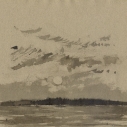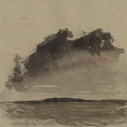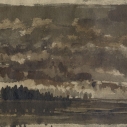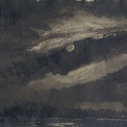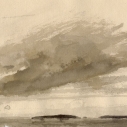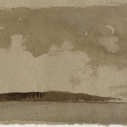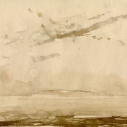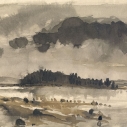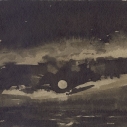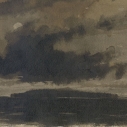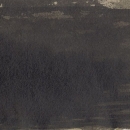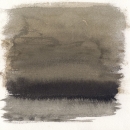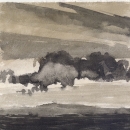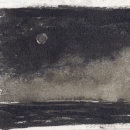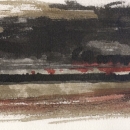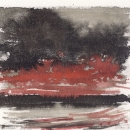When considering the work for this exhibition, I was reminded that drawings need not, and should not be limited to being viewed as only a “sketch” from which a painting evolves. We can re-state the obvious about the quickness and spontaneity of capturing a quick note for reference, but it would be a mistake not to recognize the required elements of composition, color and picture plane.
In one sense, I can look at Wissler’s drawings in the same way that I look at his paintings. They are both about a sense of place, space and time defined with the use of shape and color. But, in the drawings, I see that the color has to be enticed to the surface. I needed to allow myself to see the color as it emerged from Wissler’s use of the ink as opposed to the more obvious use of color in paint. In a few of the drawings, he experiments with the use of red ink. As you look at those particular drawings, see how he gently starts to pull back that pigment – making it comply. It is his hand that works the color into the drawing, not the pigment of the ink. There is a new bond created between artist and drawing medium.
The artist is no stranger to using the support (in this case – paper) to his advantage in composition or color. With the drawings, he demands that the paper own even more of the final work. Qualities of the paper and how much of it is used become as important as the ink in the end. Fourteen of the works included in this exhibition are on treasured handmade English paper collected by Seymour Remenick during his service in WW II and later gifted to Wissler. A command of balance between paper and ink is required from the beginning as there is no place in the drawing for the brush or layers of paint to compensate.
Complete and developed as any painting, these drawings present themselves as “a moment quickly captured” as they tease us away from our preconceived definitions.
Joyce Graham Heberlein, Gallery Director

